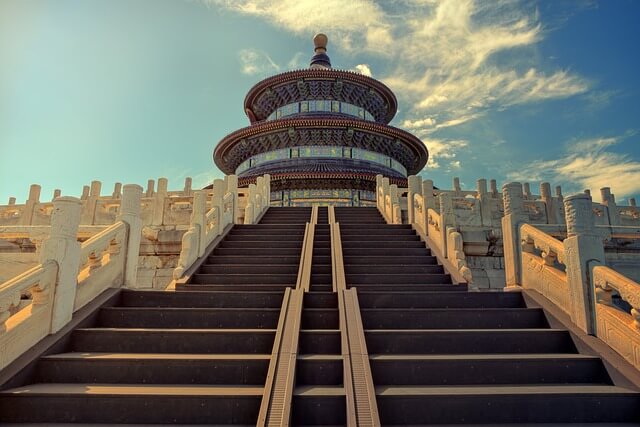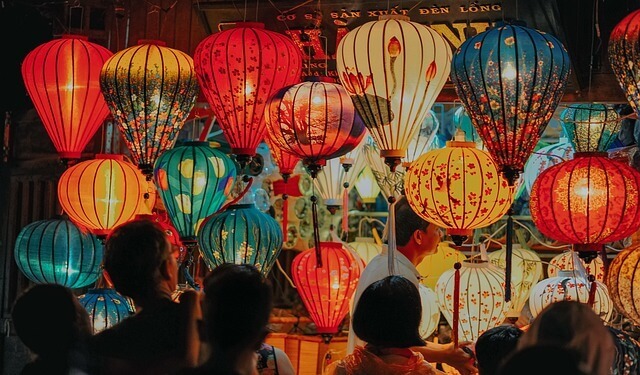
Welcome to our comprehensive guide on Dragon Magic and the fascinating origins behind Asia’s most iconic festivals.
Dragons are more than mythical creatures in Asian cultures; they are symbols of power, strength, and good fortune.
This guide delves into the cultural significance of dragons, highlights famous dragon-themed festivals, explores the historical roots of dragon mythology, and offers practical tips for experiencing these festivals firsthand.
Common Questions About Dragon Magic and Asian Festivals
- Why are dragons important in Asian festivals?
- What are some famous dragon festivals in Asia?
- How did dragon mythology originate in Asia?
- What do dragons symbolize in Asian culture?
- How can I experience these festivals firsthand?
Why Are Dragons Important in Asian Festivals
Dragons occupy a central role in many Asian cultures, particularly in China, Japan, Korea, and Vietnam.
These mythical creatures are revered not as fire-breathing monsters, but as benevolent protectors that embody various virtues and natural forces.
The Cultural Significance of Dragons
Dragons in Chinese Culture
In Chinese culture, dragons are seen as auspicious creatures that control rain, rivers, and seas.
They symbolize power, dignity, fertility, and wisdom. Historically, the dragon was the emblem of the emperor, representing his divine right to rule and his control over the natural world.
Chinese festivals often feature dragons to invoke their protection and blessings.
For instance, during the Lunar New Year, dragon dances are performed to chase away evil spirits and welcome prosperity.
The dragon’s movements, orchestrated by a team of skilled dancers, mimic the undulating flight of these legendary creatures, creating a mesmerizing display of coordination and tradition.
Dragons in Japanese Culture
In Japan, dragons are known as “ryū” and are often associated with water bodies such as seas, lakes, and rivers.
Japanese dragons are typically depicted as serpentine creatures without wings but possessing great wisdom and power.
They are considered protectors and bringers of good luck.
Dragons in Korean Culture
Korean dragons, or “yong,” are often depicted as benevolent and related to agriculture, reflecting their importance in Korean mythology and folklore.
Unlike their Chinese counterparts, Korean dragons are often shown with long beards and without wings.
They are seen as guardians and symbols of good fortune, and their imagery is prevalent in various Korean festivals.
Dragons in Vietnamese Culture
In Vietnam, dragons are known as “rồng” and play a significant role in folklore and cultural traditions.
They are considered to be the descendants of the dragon king, Lạc Long Quân, who, according to legend, is one of the ancestors of the Vietnamese people.
This connection makes dragons a symbol of national pride and identity.
Famous Dragon Festivals in Asia
Chinese New Year (Lunar New Year)
One of the most renowned festivals featuring dragons is the Chinese New Year, also known as the Spring Festival.
Celebrated at the start of the traditional lunisolar Chinese calendar, it marks the beginning of a new year and is a time for family reunions, feasts, and various traditional activities.
The Dragon Dance
The dragon dance is a staple of Chinese New Year celebrations. This dynamic performance involves a team of dancers manipulating a long, flexible dragon figure made of silk, bamboo, and paper.
This symbol character, which can be up to 100 meters long, is animated to undulate gracefully, mimicking the movements of a mythical river dragon.
The dance is accompanied by the rhythm of drums, cymbals, and gongs, creating a lively and festive atmosphere.
Dragon Boat Festival (Duanwu Festival)
The Dragon Boat Festival, also known as Duanwu Festival, is celebrated on the fifth day of the fifth lunar month.
This festival commemorates the ancient Chinese poet Qu Yuan, who is remembered for his patriotism and contributions to Chinese literature.
Dragon Boat Races
The highlight of the Dragon Boat Festival is the dragon boat races. These races feature long, narrow boats adorned with dragon heads and tails, manned by teams of paddlers.
The boats race to the beat of drums, creating an exhilarating and competitive event.
The races are not only a test of speed and endurance but also a tribute to teamwork and community spirit.
Traditional Foods
Zongzi, or sticky rice dumplings wrapped in bamboo leaves, are a traditional food enjoyed during the Dragon Boat Festival.
These dumplings come in various fillings, including sweet and savory options, and are a symbol of good luck and prosperity.
Mid-Autumn Festival
The Mid-Autumn Festival, also known as the Moon Festival, is celebrated on the 15th day of the eighth lunar month.
It is a time for families to gather, give thanks for the harvest, and enjoy the full moon.
Dragon Lanterns
Dragon lanterns are a prominent feature of the Mid-Autumn Festival. These intricate lanterns, often crafted from paper and bamboo, are illuminated from within and carried in processions or displayed in homes and public spaces.
The dragon lanterns symbolize unity, happiness, and the importance of family.
Tet Nguyen Dan (Vietnamese Lunar New Year)
In Vietnam, the Lunar New Year, known as Tet Nguyen Dan or simply Tet, is the most significant festival of the year.
It marks the arrival of spring and the beginning of the lunar new year.
Lion and Dragon Dances
Tet celebrations feature both lion and dragon dances, performed to bring good luck and ward off evil spirits.
The dragon dance is particularly spectacular, with its colorful dragon figure weaving through the streets, accompanied by firecrackers, drums, and gongs.
Traditional Foods
During Tet, families prepare and enjoy a variety of traditional foods, such as Banh Chung (square sticky rice cakes) and Gio Lua (Vietnamese sausage). These dishes are rich in symbolism and reflect the cultural heritage of Vietnam.
Origins of Dragon Mythology in Asia
Ancient Chinese Mythology
The mythology of dragons in Asia, particularly in China, dates back thousands of years. In ancient China, dragons were believed to be the descendants of the celestial dragon, which controlled rain, weather, and water bodies.
These beliefs likely originated from the agrarian societies’ need to explain natural phenomena and ensure favorable conditions for crops.
Historical Texts and Legends
Dragons appear in numerous historical texts and legends.
One of the most famous is the legend of the Yellow Emperor, Huangdi, who is said to have been transformed into a dragon and ascended to heaven.
Another notable figure is Yu the Great, who, according to legend, controlled floods with the help of a dragon.
Japanese Dragon Mythology
In Japan, dragon mythology is influenced by both native folklore and Chinese mythology.
Japanese dragons are often depicted as water deities, and many legends involve dragons living in lakes or seas.
One famous legend is that of Ryūjin, the dragon king who lived under the sea and controlled the tides.
Korean Dragon Mythology
Korean dragons, or “yong,” are often depicted as benevolent beings associated with water and agriculture.
The mythology of this country includes stories of dragon kings who rule over aquatic realms and provide rain for the land.
These dragons are considered protectors of the people and the natural world.
Vietnamese Dragon Mythology
Vietnamese mythology includes the legend of Lạc Long Quân, the dragon king who married a fairy and fathered the ancestors of the Vietnamese people.
This legend is a foundational myth of Vietnamese culture and highlights the significance of dragons as symbols of strength and unity.

How to Experience These Festivals Firsthand
Planning Your Visit
If you’re planning to experience these festivals firsthand, here are some tips to help you make the most of your visit:
Plan Ahead
Festivals like the Chinese New Year and the Dragon Boat Festival attract large crowds.
It’s essential to book your accommodations and travel arrangements well in advance.
Consider visiting less touristy cities or villages to experience the festivals in a more intimate setting.
Engage Locally
Participate in local customs and traditions to immerse yourself in the cultural experience. Join in the dragon dances, help prepare traditional foods, and engage with local communities.
This will give you a deeper appreciation of the cultural significance of the festivals.
Respect Traditions
Learn about the customs and etiquette associated with the festivals. Showing respect for local traditions and practices will enhance your experience and help you connect with the community.
Interactive Element: Share Your Festival Experience
Have you attended a dragon festival? What was your experience like? Share your stories in the comments below or tag us in your social media posts using #DragonMagicFestivals. We’d love to hear from you and see your photos and videos!
Keeping the Content Fresh
We regularly update our content to ensure it’s current and relevant. Check back often for the latest information on upcoming festivals and new stories about dragon mythology.
Your engagement helps us improve and bring you more of what you love.
Final Thoughts
Understanding the magic behind dragons and their role in Asian festivals opens a window into the rich cultural heritage of these regions.
Whether you’re planning to visit or just curious, the stories and traditions offer a fascinating glimpse into the past and present.
Feel free to leave comments, share your thoughts, and spread the word about the magic of dragons and the festivals they inspire.
Frequently Asked Questions
What is the significance of the Dragon Boat Festival in China?
The Dragon Boat Festival, also known as the Duanwu Festival, is a traditional holiday in China that occurs on the fifth day of the fifth month of the traditional lunar calendar.
It is celebrated to prevent disease or evil and promote health and well-being.
The festival includes activities like preparing and eating zongzi (sticky rice treats) and drinking realgar wine, along with the iconic dragon boat race where boats, decorated like dragons, compete with up to 80 rowers.
Who is Qu Yuan, and why is he associated with the Dragon Boat Festival?
Qu Yuan was a poet and minister in ancient China during the Warring States period of the Zhou Dynasty. He opposed the alliance of the king with the state of Qin and turned to poetry during his exile.
Qu Yuan later committed suicide by drowning himself in the Miluo River.
The Dragon Boat Festival is said to commemorate his death, with activities like the dragon boat race and traditional customs being part of the festival in his honor.
How do Asian dragons feature in popular culture, like in the anime series Dragon Ball Z?
Asian dragons have been a significant part of popular culture for centuries.
In the Japanese anime series Dragon Ball Z, the dragon Shenlong is depicted with the power to grant wishes, showcasing the mystical and powerful nature associated with dragons in Asian folklore and modern entertainment.
What is the connection between dragons and Samurai warriors in Japan?
In Japan, dragons were used as emblems of masculine power and were worn into battle by Samurai warriors.
The dragon symbolizes strength and courage, and its image was often depicted on armor, sword guards, and other warrior-related items.
This association with power and protection was deeply ingrained in Japanese culture, especially during ceremonies like the Boys’ Festival held each May.
How are dragons linked to cultural beliefs and legends in various Asian countries like Vietnam, China, Korea, and Japan?
Dragons hold significant cultural importance in various Asian countries.
In Vietnam, the rocky islands of Ha Long Bay are believed to have been created by a dragon.
The dragon in China Well tea region near Hangzhou is named after a rain-bringing dragon that was believed to reside there.
The landscape in Korea is shaped by mountains resembling a blue dragon and a white tiger, symbolizing auspicious locations.
Legends of a dragon king in Japan residing in a pond and being invoked during droughts highlight the dragon’s association with natural elements and power in different Asian cultures.
Leave a Reply